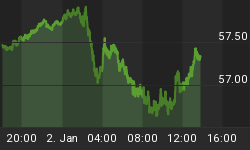According to the founding fathers of Dow theory, which include Charles H. Dow, William Peter Hamilton and Robert Rhea, the single most important aspect of Dow theory is the price movement above and below previous secondary high and low points. The question is, what constitutes secondary high and low points? In all honesty, this is where the art of Dow theory comes into play. But, for those who have truly studied the original writings by Dow, Hamilton and Rhea this becomes fairly obvious with study. I can assure you that no book on technical analysis covers the Dow theory in enough detail to provide the reader a complete working knowledge of Dow theory.
It has become fairly obvious to me that the people who try to use the Dow theory with a limited understanding of the subject often later claim that the Dow theory was wrong. In reality the problem is that they never truly understood Dow theory in the first place and the Dow theory did not fail. As an example of this, when the averages moved up out of the January/March lows and bettered the February highs there were numerous articles, newsletters and web sites claiming that the Dow theory had triggered a "buy signal." I know this because I was bombarded with the e-mails. I have also recently seen comments stating that with the Industrial's recent move below the January/March lows, the Dow theory "buy signal," that was allegedly triggered by the advance above the February highs, has now "failed."
Now, to clarify these erroneous misrepresentations of the Dow theory I must first state that the February highs did not qualify as having marked a secondary high point. Thus, to have claimed that the move above that level "triggered a buy signal" was in complete error. I have maintained, since the rally out of the January/March secondary low points began, that these lows marked secondary low points. I have also maintained since the February highs were first bettered that the February highs did not represent secondary high points in accordance to Dow theory and that no "buy signal" had been triggered. I have further stated that the primary bearish trend change, which was confirmed on November 21, 2007, still remained intact. Thus, the fact the Industrials have recently broken down below their March closing lows is not a "failure" by the Dow theory. Rather, the failure was the inaccurate reading of the Dow theory in the first place.
Now that I have addressed the recent misunderstandings and misinterpretations of Dow theory that have been brought to my attention, lets look at the current Dow theory chart shown below.

Beginning with the break below the August secondary low points, which occurred on November 21, 2007, the primary trend in accordance with Dow theory, turned bearish. This level is noted by the blue horizontal lines. That break was followed by the decline into the January/March secondary low points. As I have stated numerous times here before, nothing has occurred since the rally out of these lows to invalidate the bearish primary trend change that was triggered in November. Based upon my cycles work, which has absolutely nothing to do with Dow theory, I expected and told subscribers that the secondary high points should ideally occur in the May to June timeframe and that is exactly what occurred. In the process of the advance the Transports moved to another all time high, but the Industrials lagged and did not move above their previous secondary high point. In doing so, this created another upside non-confirmation, which is illustrated in red. From the May/June unconfirmed secondary high point the averages moved down into the recent lows in which the Industrials violated their March secondary low point while the Transports held above their last secondary low point, which occurred in January. As a result, we now also have a downside non-confirmation as well. Non-confirmations serve as warnings of a possible trend change. The key now is identifying the next secondary low point and understanding the meaning of the developments as we move up out of those lows. Again, cycles have nothing to do with Dow theory, but my cycles work along with my statistical analysis and the Cycle Turn Indicator will be extremely valuable in accessing the landscape and identifying turn points as we move forward. I also want to add that in light of the Dow theory bearish primary trend change, the Industrials are now at 2-year lows as is the S&P 500 and even the broader Wilshire 5000. But, once the next low is established, the hype from the mainstream media will begin. They will without a doubt tell us that everything is okay. Personally, I have to stick with the trusty old Dow theory and my proven cycles and statistical analysis for guidance.
I have begun doing free Friday market commentary that is available at www.cyclesman.com/Articles.htm so please begin joining me there. Should you be interested in more in depth analysis that provides intermediate-term turn points utilizing the Cycle Turn Indicator, which has done a fabulous job, on stock market, the dollar, bonds, gold, silver, oil, gasoline, and more, those details are available in the newsletter and short-term updates. I will also be covering the details on the dollar and commodities in the coming months as these developments unfold. A subscription includes access to the monthly issues of Cycles News & Views covering the Dow theory, and very detailed statistical based analysis plus updates 3 times a week.
















